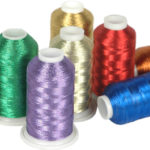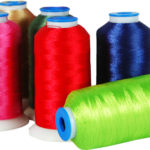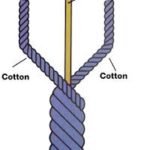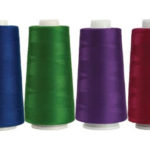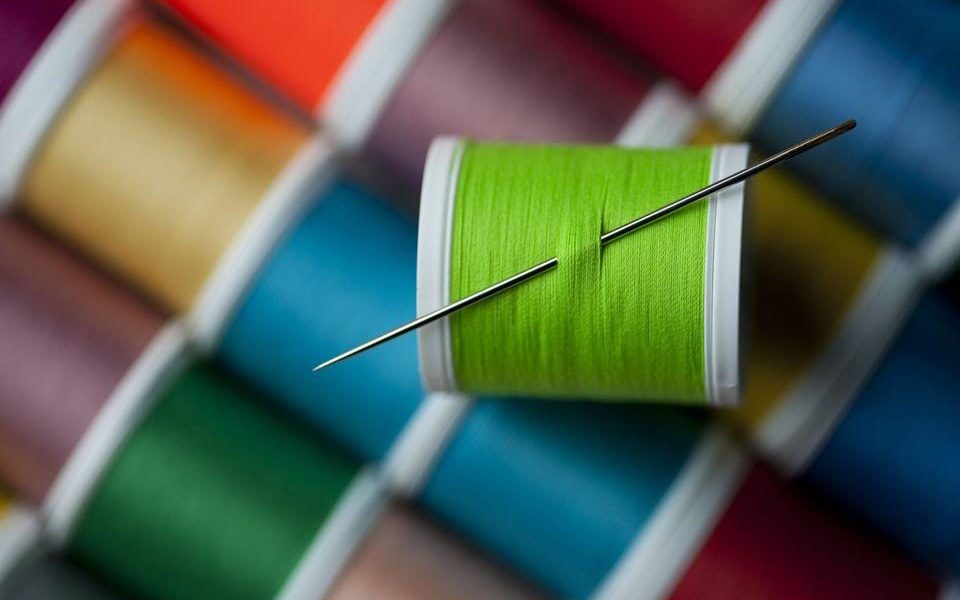
At Globe Thread Canada we offer all types of sewing and embroidery threads as per customer requirements. We deal with manufacturers across the globe to offer our customers the best quality threads at the most competitive prices. Below are some example of threads we generally deal with:
- Polyester Spun Sewing
- Polyester Embroidery
- Cotton Sewing Thread
- Viscose Embroidery Thread
- Indigo Thread
- Metalic Thread
- Quilting Thread
- High Tenacity Threads
- Core Spun Thread
Thread (yarn), a kind of thin yarn used for sewing. It is a filament or a group of filaments twisted together, or a filamentous length formed by spinning and twisting short textile fibers into a continuous strand
Thread holds everything together when you’re sewing. Which means whether you’re sewing by hand or by machine, it’s important to choose wisely when considering the different types of sewing thread for your project. Sewing threads are special kinds of yarns that are engineered and designed to pass through a sewing machine rapidly. They form efficient stitches without breaking or becoming distorted during the useful life of the product. The basic function of a thread is to deliver aesthetics and performance in stitches and seams.
Factors affecting aesthetics
Colour, lustre and fineness / thickness should be considered while selecting a thread for decorative purposes such as top stitching or embroidery.
Other considerations include:
- Hue and shade matching
- Colour fastness
- Stitch selection
- Uniformity of stitch formation
Factors affecting performance
Thread used in garments must be durable enough to withstand the abrasion and needle heat that occur while sewing, garment finishing, stretching and recovery during wear.
Thread performance in garments can be evaluated from its
- Seam strength
- Abrasion resistance
- Elasticity
- Chemical resistance
- Flammability
- Colour fastness
Types of Threads
Cotton
Cotton thread has very little “give” and tends to break easily. However, it’s a good choice when sewing delicate fabrics or for lingerie sewing projects. Choose a medium thickness cotton thread for working with lightweight to medium-weight cottons, linens and rayons.
Polyester
Polyester thread is a a true all-purpose thread, and it’s a good choice for most sewing projects, both machine- and hand-sewn. The thread has some give to it, so it won’t break when you are working with stretchy knits. Polyester thread often has a wax or silicone finish that allows it slip through the fabric easily. You can also find invisible polyester thread, which is an ideal choice when you are searching for an extremely strong thread that will also stay hidden.
Heavy Duty
Heavy-duty thread is also a polyester thread, but the weight of the thread is not suitable for most garment sewing projects. It is, however, the perfect choice when sewing upholstery and canvas, so you might find yourself reaching for it when you’re tackling home decor sewing projects.
Silk
Silk thread is very fine. It’s also flexible and won’t leave holes, so it makes an excellent choice for basting thread. It’s also great to use when sewing silk or wool.
Wool
You probably won’t have many occasions to use wool thread when sewing garments, as it tends to be used for embroidery projects, but it is an extremely strong thread that’s a good choice when working with heavy fabrics like wool and canvas. It can be a good option for topstitching– just be sure to use a larger needle and adjust your sewing machine’s tension appropriately.
Metallic
Metallic thread is often featured on handbags; you can find it in gold, silver and copper varieties. It’s used often in machine embroidery, and would be a good choice if you were looking a thread with a little flair for topstitching.
Designer
These are typically made from combining two or more types of thread, like a silk and rayon blend.
Choosing the right thread
Good tensile strength holds the stitched seam securely during wash and wear.
Smooth surface and absence of faults ensures less friction between the needle and the material during high-speed sewing. The thread must be well lubricated to increase its sewability and resistance to abrasion.
Uniform thickness / diameter results in an even sewing thread, which moves smoothly and quickly through the needle eye and the fabric. It also affects the thread’s tensile strength, resistance to abrasion and its twist construction. An uneven thread may twist into short knots and jam at the eye of the needle.
Good elasticity enables thread to recover its original length immediately after the tension has been released. The elasticity of sewing thread affects the strength and the finished quality of a stitched seam.
Good colour fastness provides immunity to the different agents the thread is exposed to during manufacture and washing. The thread must hence be uniformly dyed.
Low shrinkage of the thread being used on the fabric material with higher shrinkage reduces the chances of seam puckering.
Good resistanceto chemical attack is a desirable property for thread used in garments which may undergo washing, bleaching or dry-cleaning.
Good abrasion resistance ensures a good sewing performance and makes the thread more durable.
Embroidery is a traditional art used to make decorative stitching on fabric or any other material with hand or machine. This skill may also include pearls, sequins, beads, quills, decorative strips to make it look attractive. In olden times, it was mostly done by hand using needle and yarn. However, in recent times specialized sewing machines are available which can make complex embroidery patterns. The art of embroidery is very old. It is known to be a delicate craft which does not have a long life. It requires special care to preserve it from deterioration. This traditional sewing art has come a long way from using ancient gold threads to modern specialty fibres.
Different types of threads are used for making embroidery stitches. If the embroidery of ancient and modern age is compared, one can find a huge difference in the threads and the techniques used in creating them. Earlier, only hand embroidery existed but as time passed, machines were introduced and today computerized embroidery has captured the hearts of the designers and people.
There are some factors one needs to consider before selecting the thread for embroidery. The type of fabric, embroidery technique, kind of stitch, needle type, etc. needs to be considered. A variety of embroidery threads are available in the market in different colors, types and weights. One can select the threads according to one’s requirement.
In general there are seven different types of embroidery thread, each very similar but designed for a specific purpose or intended to achieve a certain look.
- Crewel yarn is a fine 2-ply yarn of wool or, less often, a wool-like acrylic
- Embroidery floss or stranded cotton is a loosely twisted, slightly glossy 6-strand thread, usually of cotton but also manufactured in silk, linen, and rayon. Cotton floss is the standard thread for cross-stitch.
- Matte embroidery cotton or French coton à broder is a matte-finish (not glossy) twisted 5-ply thread.
- Medici or broder medici is a fine, light-weight wool thread formerly manufactured by DMC Group.
- Perle cotton, pearl cotton, or French coton perlé is an S-twisted, 2-ply thread with high sheen, sold in five sizes or weights (No. 3, 5, 8, 12 and 16 (Finca), with 3 being the heaviest and 16 the finest)
- Persian yarn is a loosely twisted 3-strand yarn of wool or acrylic, often used for needlepoint
- Tapestry yarn or tapestry wool is a tightly twisted 4-ply yarn

